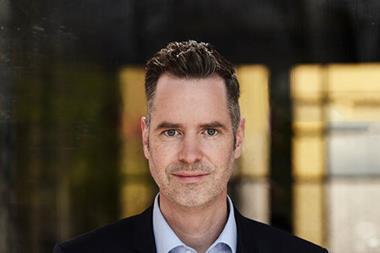About two years ago, on the initiative of one of our clients, we started to dig deeper into the subject of ‘master KAGs’. At the end of last year and several projects later, which involved the transfer of over 30 Spezialfonds with a total assets of €5bn, we completed the first and most comprehensive survey on the German master KAG-market. By then, we could draw on the experience of several beauty contests, including the evaluation of requests for proposals (RFPs) as well as extensive interviews and presentations. We even conducted due diligence type research on all relevant players by visiting them, reviewing the processes and interviewing the employees involved.
This article reflects the status-quo of the market when our study was completed and gives a brief description of our vision of a ‘Model-master KAG’. It will conclude with some brief comments on the development in the past months.
By the end of last year around 17 KAGs (Kapitalanlagegesellschaften) were thinking of or were offering master KAG-services. Our study is based on the analysis of the largest 12, which manage or administer in total more than € 245bn in over 3,430 Spezialfonds, where less than 10% were categorised as segmented funds. This is a very clear indication that this market still is in an early stage of development even though the concept of segmented funds is not new.
However, the demand for this product was stimulated by a circular of the BaFin, Germany’s federal financial supervisory authority in December 2001 which allowed KAGs to outsource core competencies such as portfolio management, fund administration, or controlling functions out to other companies.
The quality of a master KAG is determined by its ability to manage the overall flow of information between all relevant parties as well as to satisfy the individual demands of its clients. The competing companies are facing a market environment that is characterised by a continuously growing level of process mechanisation but also a lack of standards especially in methods of communication. Solving these problems, which clients are usually unaware of, will be essential to a master KAG.
The crucial issues for a master KAG are the exchange of information with the advisers and its internal data-processing which are both mainly determined by interface, security and efficiency problems. Most visible to the client, though, is the quality of the reporting, which mainly determines the quality of service the client experiences.
Communication between adviser and master KAG: Usually a master KAG is dealing with many advisers. Their investment recommendations have to pass a pre-trade check done by the master KAG regarding the compliance with legal and clients’ restrictions. If the advice complies with all restrictions either the master KAG or the adviser executes the order. Depending on the master KAG the adviser can give his recommendations in different ways.
All KAGs offer phone or fax to communicate the order, most even used email (usually for transmitting a predefined file). We are quite sceptical about the last method due to risks involving security problems, because in most cases this transfer was done unprotected. In addition, one can never be sure that an investment recommendation sent by email will get to the KAG in time. Therefore, recommendations by email were usually accompanied by a fax or phone call. Not even half of the KAGs surveyed used or offered SWIFT or FIX as ways of communication with the advisers.
In the past there was not much need to use this technology because rarely were the advisers capable of using it. Only very few KAGs were capable of and willing to make their own portfolio management tools available to advisers. However, this was of less relevance since a survey that we conducted at the same time showed, that most advisers would not be willing to make use of such a facility. None of the surveyed KAGs provided the opportunity to the advisers, for example, to upload their order or to enter it directly into an order-mask comparable to the various online-brokers.
To get timely information about their portfolio is of the same importance to the adviser as giving their investment recommendations. Our survey revealed that more than two thirds of the advisers would still do a shadow accounting for portfolios, where the master KAG is responsible for the fund administration - even in the case where the master KAG would offer extensive portfolio data via online-access. Nevertheless, most advisers expected that a modern master KAG offers full information online. The opportunity to exchange data electronically with the master KAG was classified by all advisers as important or indispensible.
To receive timely information about the current cash position or the status of pending orders was also of high importance to the advisers. The often poor provision of relevant data by the master KAG might therefore be a reason why advisers frequently preferred to manage funds instead of giving advice. However, we also observed that the adoption of new technologies or different methods of communication being used was not really common among advisers. The same way as demands are increasing on master KAGs the demands on advisers in the future will be definitely higher than today.
Order processing and data management: The relatively low technological level in communication standards could also be observed at the pre-trade compliance check stage. Frequently, clients’ restrictions had to be checked manually or different software tools had to be used. However, one of the bigger problems is prior to this check. Only one out of four KAGs was transferring investment recommendations directly into its system. Most KAGs had to manually enter an order sent by fax or even by email which was printed out. This part of the whole process, adviser communication and compliance check, is the highest hurdle the KAGs have to overcome to implement a true straight-through process (STP).
The internal data management, the order processing after the pre-trade check and the communication with the custodian had on average a significantly higher level of automation. Especially when communicating with the custodian SWIFT was the primary way of exchanging information. Nearly all KAGs used a data warehouse where all data were centralised and where other operations, like performance measurement and reporting could be drawn on.
Reporting for segmented funds with many managers and often more than one asset class is more demanding than for a single fund. There is at least one more level - the masterfonds -to analyse but one could also ask for the analysis of the aggregation purely of equities or bonds. Furthermore an analysis of the clients’ total portfolio including the self-managed assets would be possible. While many KAGs were capable of an often already automatically generated reporting of the masterfonds, the creation of a total-assets-analysis or an asset-class-analysis could only be accomplished with lot of manual work. Sometimes, though, this was not even possible technically due to the lack of the appropriate software.
How does the client get the information? Only half of the KAGs surveyed were capable of providing a downloadable reporting on their website. Sometimes this data was not in a processible format and often not more than a list of all assets and trades was provided. However, when it came to reporting via email all KAGs could provide their clients with processible data.
Looking at service quality big differences could be observed. While some KAGs were willing to fulfil the client’s individual needs without hesitation (and without additional cost) others were more or less reluctant. In these cases, individual demands could only be fulfilled with additional manual work and therefore higher cost.
Obviously the master KAG market is bulk business. We estimate that on a long term view € 25-50bn are necessary for a master KAG to operate with reasonable profits. New entrants in the market can still be observed, however, a couple of KAGs are already drawing back to some extent.
They are not actively marketing a master KAG service to new clients but only offering it to their existing client base. This market will consoli-date strongly the next couple years leaving only between five and 10 companies offering this service.
These companies that we could identify as most probable lasting market participants for the most part made much progress over the past months. Evidently, the greatest efforts were made where the client definitely would recognise it. Reporting capabilities and online functionality were often improved significantly. Advances in the overall chain of information could only be observed at few companies. However, there are several IT projects under way and their successful implementation within a reasonable timeframe will decide which companies are to be taken seriously as a master KAG.
Bodo Doose is with Georg Seil Consulting GSC, based in Wiesbaden












No comments yet